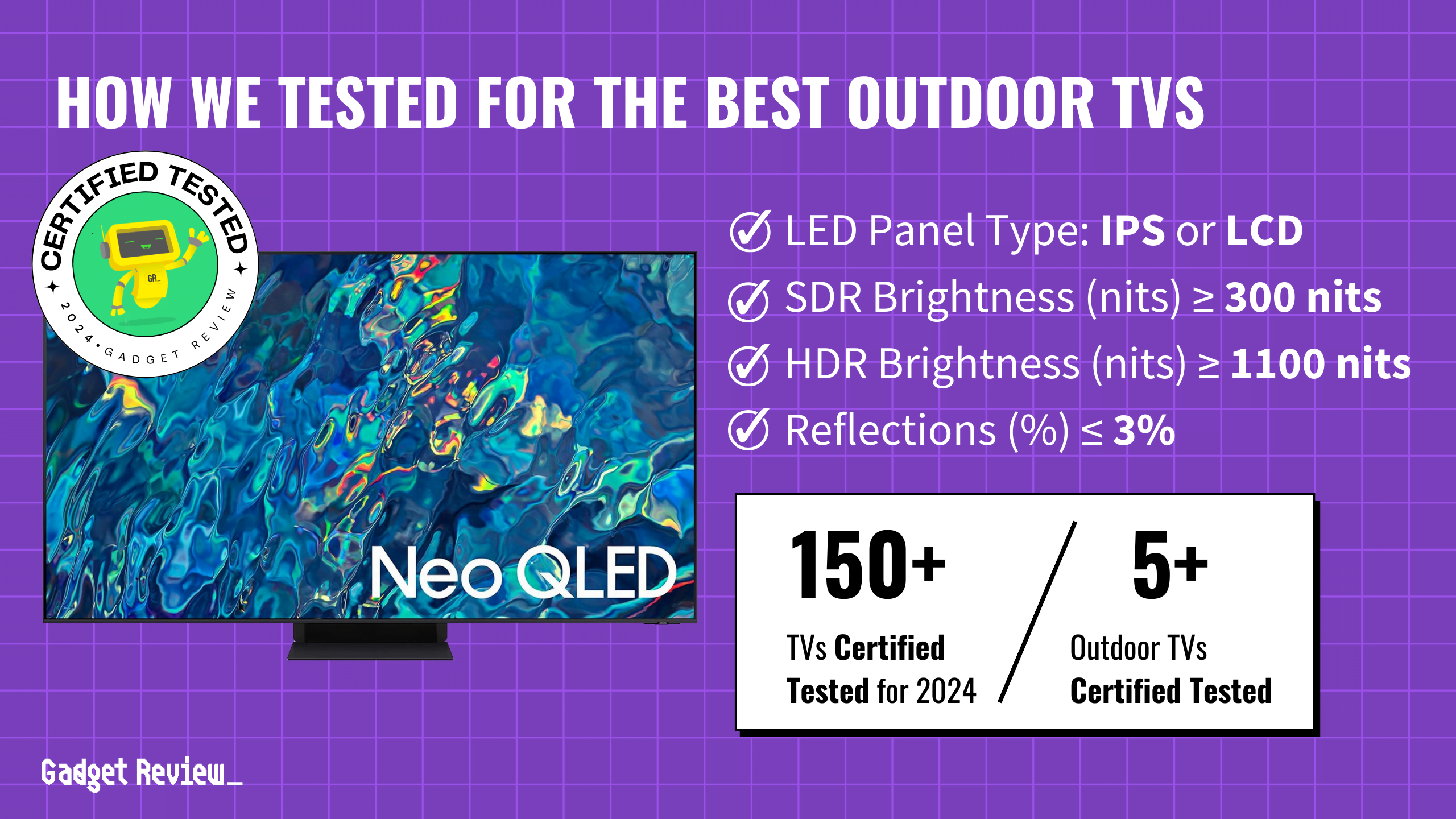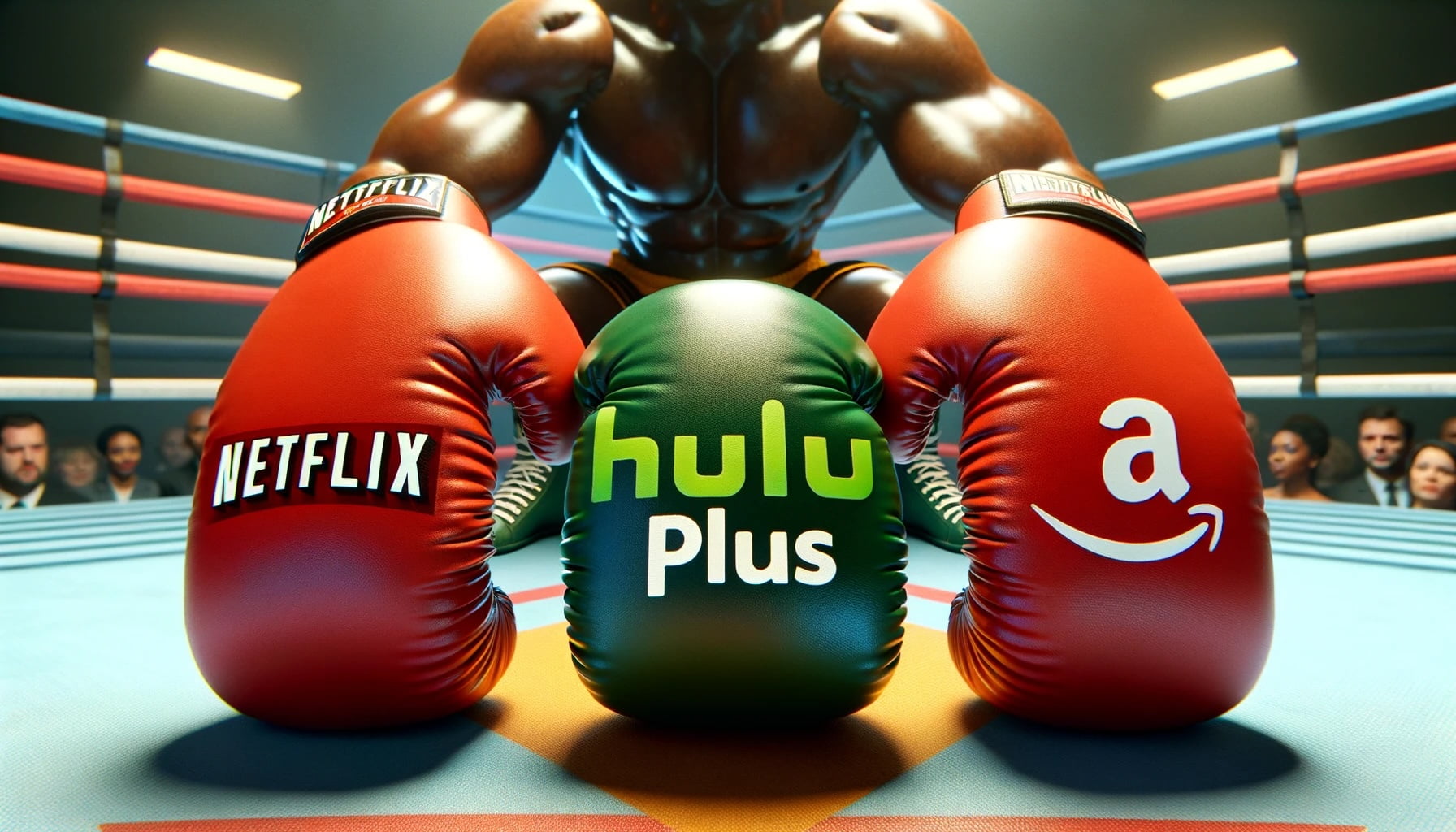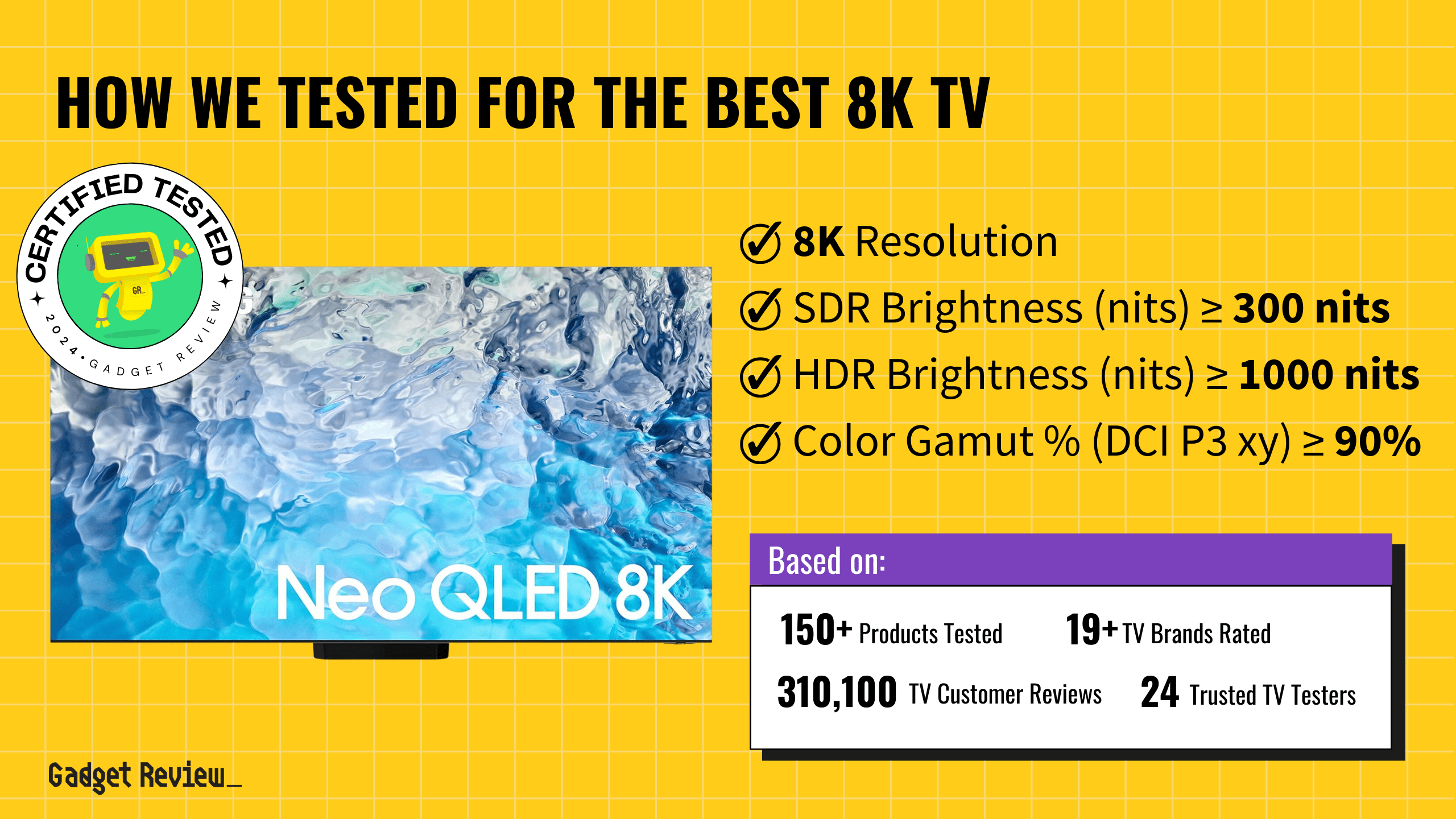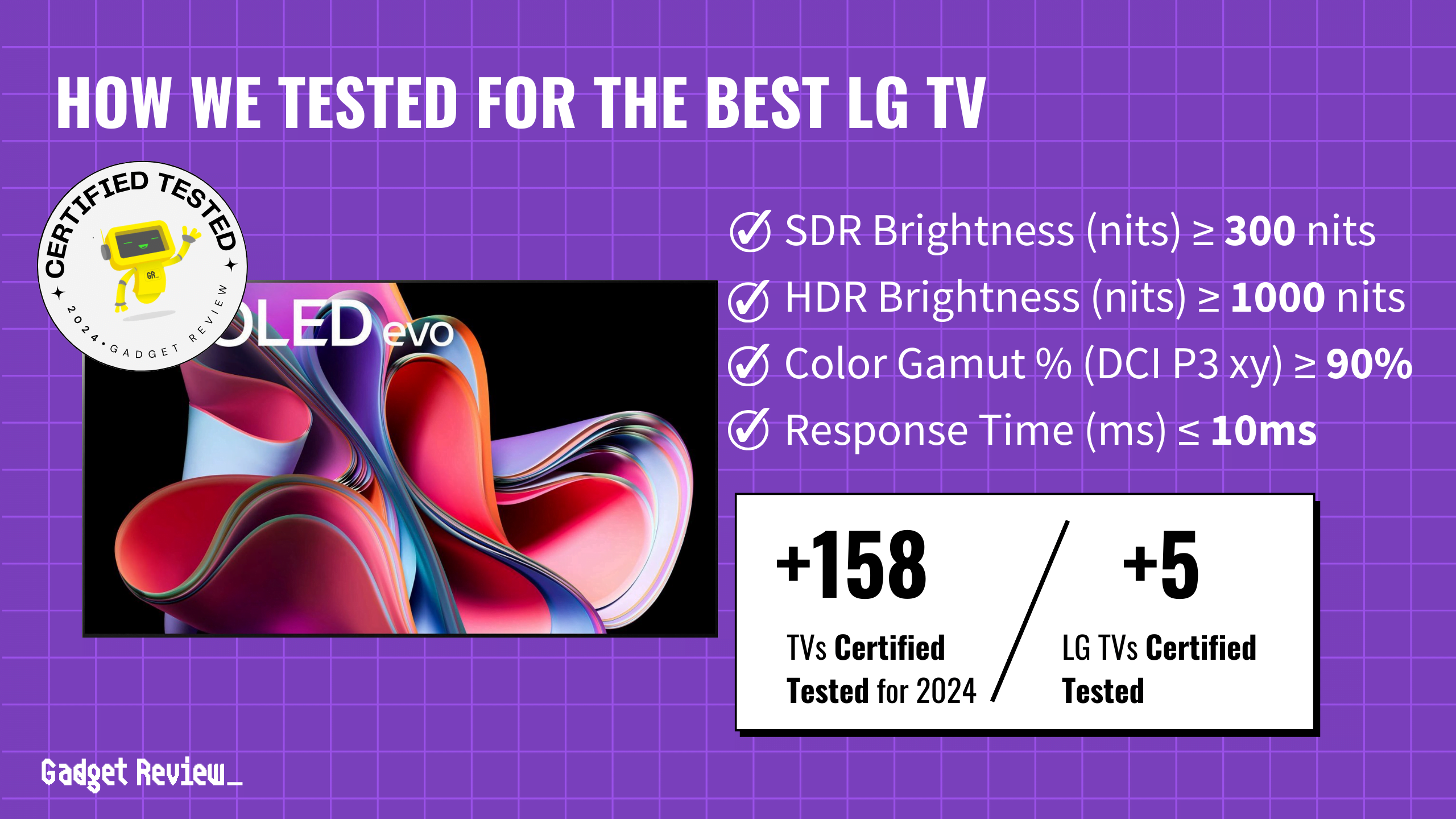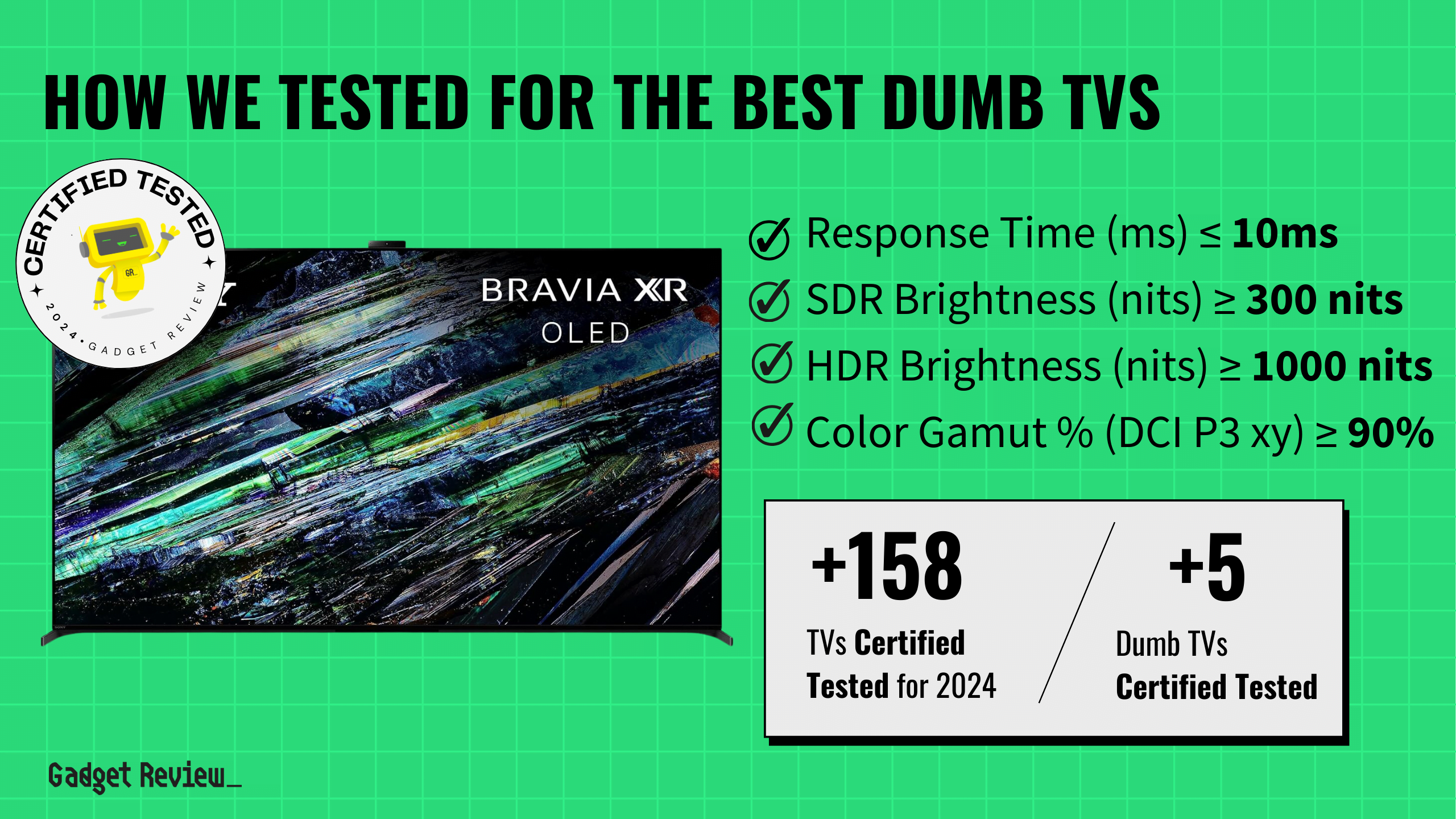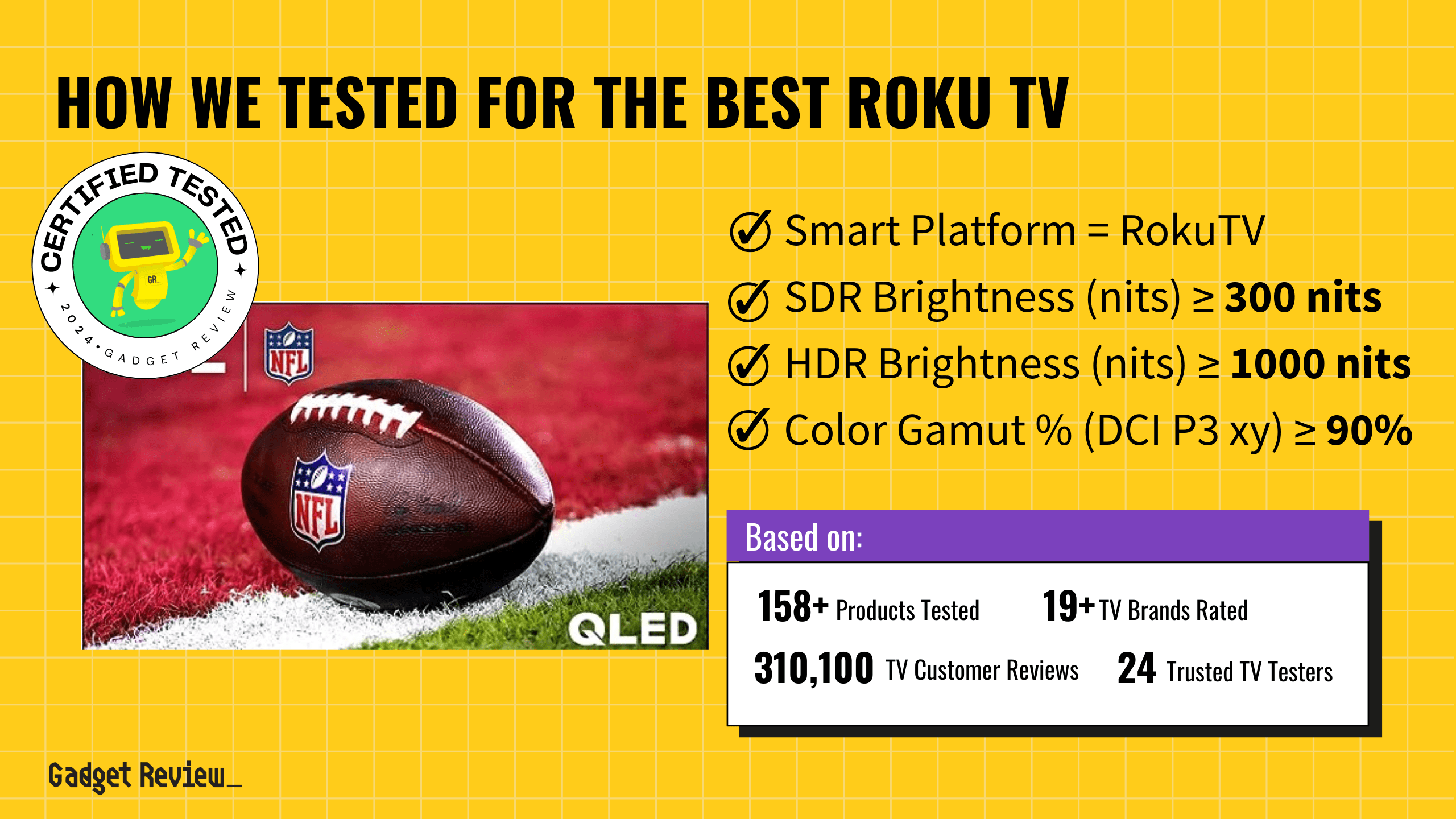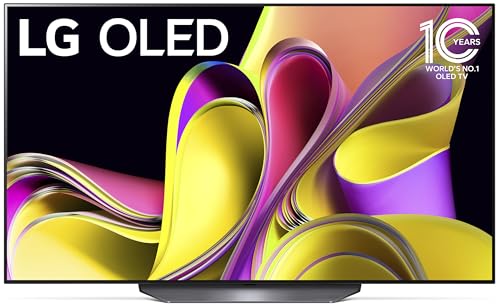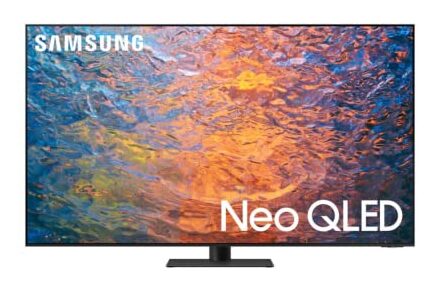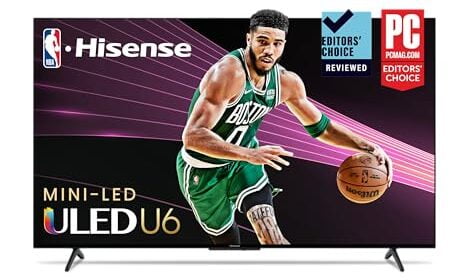When you’re in the market for the best outdoor TVs, the biggest challenge you face is finding a model that can withstand the elements while delivering exceptional picture quality. You need a top-rated TV that’s not just weather-resistant but also offers superior brightness to combat direct sunlight, along with durability to handle temperature fluctuations and humidity.
Ideal features include a robust build, high brightness levels, and a user-friendly interface that makes it easy to stream your favorite content under the stars. Let’s cut to the chase: this guide is your shortcut to picking an outdoor TV that brings your entertainment outdoors without compromise.
How Did We Rank the Best Outdoor TVs?
To assess how high or low quality a TV actually is for outdoor use, one must evaluate specific testing criteria against reference industry standards. Using our thorough TV Testing Methodology, we determined there are 1 minimum specs and 6 criteria below (3 required, 3 nice to have) that ensure your TV content looks as good as the creator intended it.
?️ Minimum Specifications
- LED Panel Type: IPS, LCD, LED, Mini LED, Mini-LED QLED, NanoCell LED, Neo QLED, QLED, Quantum LED, Quantum ULED, Standard LED, or VA, providing a diverse range of display technologies to suit different preferences.
? Test Criteria
- SDR Brightness: Maintain a minimum of 600 nits to ensure a bright and clear picture under standard dynamic range conditions.
- HDR Brightness: Achieve a brightness level of at least 1100 nits, bringing out intricate details in high dynamic range content.
- Reflections: Keep reflections to a minimum, with a maximum threshold of 3%, to enhance viewing clarity and minimize distractions.
? “Nice To Haves”
- Contrast Ratio: Aim for a contrast ratio of 10,000:1 or higher, enhancing visual depth with striking differentiation between dark and bright elements.
- EOTF Tracking: Ensure accurate EOTF (Electro-Optical Transfer Function) tracking with a delta of no more than 0.06 at 600 nits, maintaining precise brightness and contrast levels across various content.
- Color Gamut: Achieve a color gamut coverage of at least 97% of the DCI P3 xy color space, delivering exceptionally vibrant and lifelike colors for a captivating viewing experience.
We’ve redefined TV buying guides, setting us apart from any other site on the planet. Our unique approach combines in-house verification with a comprehensive dataset from over 200+ trusted sites, focusing on key testing metrics to rank the top rated outdoor TVs. Testing data include brightness (600 nits and 1100 nits), Color Gamut % (DCI P3 xy) >= 97%, and a set that has a LED Panel. In this case, it’s for outdoor TVs, which means ensuring visibility in bright lights and resilience against outdoor conditions. Discover our data-driven methodology for precise, reliable TV recommendations. Our commitment to unbiased reviews is powered by our ‘True Score’ system, targeting low quality and fake reviews. Commissions fund this mission. No bias. No BS.
Latest Updates
- 03/05/2024: Completely and thoroughly overhauled the guide to include the best and latest Outdoor TVs.
- 11/30/2023: Republished the list to include TVs based on our True Score system.
Top Best Outdoor TVs For 2025
Prices accurate at the time of publishing
To snag a spot on our list, a Outdoor TV needs to have a LED panel and capable of battling glare from direct or indirect light. If it doesn’t hit these points, we’re not including it!

Best Overall

Runner Up

Best Value

Best Budget

Best Mid-Range

Premium Pick
Samsung QN95B Neo QLED TV
High-performance outdoor TV lacking an enclosure; requires additional protection. Best-in-class HDR brightness and wider viewing angles make it a top choice for outdoor entertainment.
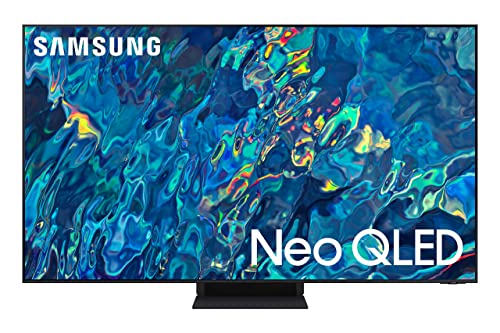
True Score
90978Experts
88654Customers
Cosmic Wonder
 $1,399.00
$1,399.00Snapshot
Reasons to Buy
- Outstanding brightness in HDR mode
- Effective local dimming with great contrast and deep blacks
- Better motion handling than most competitors, great for PC gaming
- It also offers chroma 4:4:4 support so it works well as a PC monitor.
Reasons to Avoid
- Sub-par Picture quality
- Somehwat convoluted user interface
- Default mode appears oversaturated to some users
Specifications
Max Resolution 3840 x 2160 (4k) 
Backlight Type Full-Array Refresh Rate 120 Hz, 144 Hz Display Type QLED HDMI Inputs 4 
HDMI Type HDMI 2.1 HDR Format HDR10+ 
HomeKit Compatible No 
Number of Audio Channels 4.2.2 
Panel Type QD-OLED Screen size 55″, 65″, 75″, 85″ 
Smart Platform Tizen 
Speaker Output 70 Watts 
Sync Technology AMD FreeSync Premium Pro 
VRR Yes 
Works With Remote Control, SmartThings, Wi-Fi All Specs
Test Results
SDR Brightness (nits) 1,934 HDR Brightness (nits) 2,318 Color Gamut % (DCI P3 xy) 94.7033 Response Time (ms) 7.3 Contrast Ratio (x:1) 110,423 EOTF (600 nit delta) 0.0438 Color Gamut % (DCI P3 uv) 94.75 Color Gamut % (Rec 2020 xy) 67.27 Color Gamut % (Rec 2020 uv) 77.38 Color Gamut % (sRGB) 0 Color Gamut % (Rec 709) 99.97 Color Gamut % (BT.2020) 75 Color Gamut % (Adobe RGB) 0 Color Gamut % (BT.709) 0 Input Lag (ms) 10 Color Washout (Degrees) 38 Color Shift (Degrees) 40 Brightness Loss (Degrees) 45 Reflections (%) 2.4 Low-Freq Extension (Hz) 106.79 Freq Response StdDev @ 70db 2.78 Freq Response StdDev @ 80db 2.55 Weighted Total Harmonic Distortion @80db 0.239 Intermodulation Distortion @80db 0.29 EOTF (1000 nit delta) 0.0438 EOTF (4000 nit delta) 0.0392 All Tests
All Retailers
- $1,399.00
Availability
In StockFree Shipping
No - $1,688.57$3,000Save $1,311
Availability
In StockFree Shipping
Yes
Our Verdict
The Samsung QN95B Neo QLED TV offers up fantastic outdoor performance, but lacks an outdoor enclosure. This is a necessary add-on for full sun exposure protection, as well as protection against the elements. With a peak SDR brightness of 1934 and a best-in-classHDR brightness of 2318 nits, the TV maintains outstanding visibility in bright outdoor conditions.
Its 94.70% DCI P3 color gamut and a low 2.4% reflection rate improve picture quality under direct sunlight by keeping colors true and reducing overall glare from the sunlight that the TV will absolutely have to fight against. However, as a QLED, the QN95B has narrower viewing angles than an OLED panel would, but wider than most QLEDs normally do, with a color washout angle of 38 degrees. While this means that people can’t crowd around the TV as well, it’s still a wider viewing angle than would normally be expected. However, anyone that wants to enjoy outdoor watching on the TV will still need to avoid sitting at off angles.
If you’re interested in watching sports on the QN95B, the set offers a best-in-class response time among the non-OLEDs on our list, clocking in at 7.3 ms. This keeps the action on screen crisp and free of motion blur. Plus, the QN95B also features a decently low input lag of 10.0 ms, making it suitable for gaming in high-action and competitive content.
Overall, the Samsung QN95B is a great choice for outdoor entertainment, balancing high brightness and low reflections rate with good color accuracy and wider than average viewing angles. The TV offers up excellent brightness to overcome direct sunlight and keep the picture visible when sitting outside. You can enjoy not only everyday content with outstanding clarity but also snappy and responsive sports and gaming.
Category Snapshot
TVs
- Total Brands/Products Tested
17 Brands, 158 Products
- Top 2 Brands
LG, Hisense
- Price Range (Budget-Premium)
$400-$2000
- Average True Score
76.65
- Important Test Criteria
Brightness (cd/m2)
Contrast Ratio (1000:1) - Most Trusted Testers

- Top TV Experts
- Recommended Retailer

- Typical Warranty
1 year
- Covered by Insurance
Yes – AKKO
- Test Methodology

Best Overall

Runner Up

Best Value

Best Budget

Best Mid-Range

Premium Pick
Samsung S95C OLED TV
Best For Home Theater
Premium OLED with exceptional color accuracy and wide viewing angles for outdoor use. Requires enclosure; offers unparalleled picture quality, especially in contrast and glare reduction.
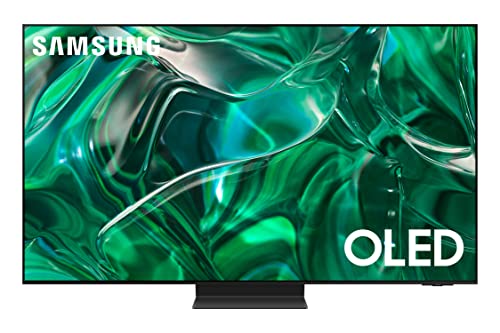
True Score
899215Experts
90724Customers
Absolutely Fresh
 SAVE $100$1,897.99$1,797.95
SAVE $100$1,897.99$1,797.95Snapshot
Reasons to Buy
- Excellent image quality
- Produces great bright colors and deep blacks
- Exceptionally wide viewing angle
- Incredibly low input lag
Reasons to Avoid
- Aggressive ABL
Specifications
Max Resolution 3840 x 2160 (4k) 
Backlight Type No Refresh Rate 120 Hz, 144 Hz Display Type OLED HDMI Inputs 4 
HDMI Type HDMI 2.1 HDR Format HDR10+, HLG 
HomeKit Compatible No 
Number of Audio Channels 4.2.2 
Panel Type QD-OLED Screen size 55″, 65″, 77″ 
Smart Platform Tizen 
Speaker Output 70 Watts 
Sync Technology AMD FreeSync, AMD FreeSync Premium Pro 
VRR Yes All Specs
Test Results
SDR Brightness (nits) 704 HDR Brightness (nits) 1,383 Color Gamut % (DCI P3 xy) 99.81 Response Time (ms) 5.5 Contrast Ratio (x:1) 0 EOTF (600 nit delta) 0.0029 Color Gamut % (DCI P3 uv) 99.53 Color Gamut % (Rec 2020 xy) 84.99 Color Gamut % (Rec 2020 uv) 89.78 Color Gamut % (sRGB) 0 Color Gamut % (Rec 709) 141.5 Color Gamut % (BT.2020) 75 Color Gamut % (Adobe RGB) 0 Color Gamut % (BT.709) 0 Input Lag (ms) 8.3 Color Washout (Degrees) 70 Color Shift (Degrees) 70 Brightness Loss (Degrees) 70 Reflections (%) 1 Low-Freq Extension (Hz) 106.79 Freq Response StdDev @ 70db 2.45 Freq Response StdDev @ 80db 2.41 Weighted Total Harmonic Distortion @80db 0.511 Intermodulation Distortion @80db 0.511 EOTF (1000 nit delta) 0.0025 EOTF (4000 nit delta) 0.0022 All Tests
All Retailers
- $1,797.95$1,898Save $100
Availability
In StockFree Shipping
No - $1,899.99$2,300Save $400
Availability
In StockFree Shipping
No
Our Verdict
If you’re looking for an OLED that can stand up to sunlight, the Samsung S95C, like its QLED counterpart, delivers high-quality performance for outdoor settings. However, it will require an additional enclosure for protection against full sun exposure and the elements. It boasts an SDR brightness of 704 nits and an impressive HDR brightness of 1383 nits, which come in lower than some of the QLEDs on our list, but makes up for that reduced brightness with vastly improved picture quality, particularly when it comes to contrast ratio, black levels and glare.
Featuring a best-in-class 99.81% DCI P3 color gamut and a best-in-class 1.0% reflection rate, the S95C excels in presenting vivid colors and reducing glare. The OLED panel provides wide viewing angles, ensuring consistent picture quality even for those seated off to the side, a significant advantage over QLED models. At 70 degrees before color washout sets in, the S95C is the best possible option if you’re hoping to set up an outdoor TV that multiple people can watch from just about anywhere..
Sports enthusiasts will appreciate the S95C’s fast response time of 5.5 ms, superior to many competitors and ensuring motion remains sharp and clear during fast-paced action. Additionally, with an input lag of just 8.3 ms, it stands out as a prime option for gamers seeking responsiveness and immersive gameplay in an outdoor setting.
The Samsung S95C OLED TV is a solid choice for anyone seeking premium outdoor entertainment that doesn’t mind the higher price tag OLED panels bring along. Its strengths lie in its exceptional color accuracy, wide viewing angles, and low reflection rate, which, combined with its OLED technology, offer a viewing experience that excels in both daytime and nighttime settings. As long as you put it into a weatherproof enclosure, the S95C is well-suited for a variety of content, from high-dynamic range movies to fast-action sports and gaming, providing a versatile outdoor viewing experience.

Best Overall

Runner Up

Best Value

Best Budget

Best Mid-Range

Premium Pick
Samsung The Terrace Full Sun Outdoor TV
Specifically designed for outdoors with built-in enclosure, albeit at a high cost. Offers seamless outdoor viewing with optimized brightness and low reflection rate but limited viewing angles.
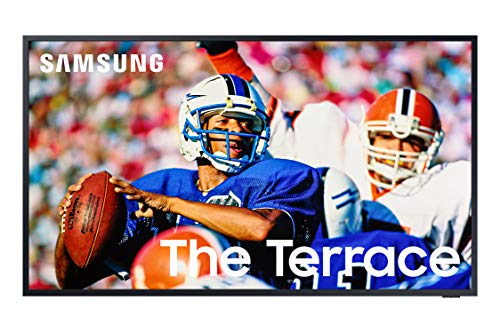
True Score
84843Experts
903kCustomers
Absolutely Fresh
 SAVE $1,701$4,999.99$3,299.00
SAVE $1,701$4,999.99$3,299.00Snapshot
Reasons to Buy
- Stunning picture quality
- Impressive contrast ratio & brightness rating
- Rapid response time
- Super low input lag
- High native refresh rate
Reasons to Avoid
- No VRR support
- Poor viewing angles
Specifications
Max Resolution 3840 x 2160 (4k) 
Backlight Type Full-Array Refresh Rate 120 Hz Display Type LED HDMI Inputs 3 HDR Format HDR10, HDR10+ 
HomeKit Compatible No 
LED Panel Type QLED Screen size 55″, 65″, 75″ 
Smart Platform Tizen 
VRR No 
Works With Amazon Alexa, Bixby, Bluetooth, Google Assistant, Remote Control, SmartThings, Wi-Fi All Specs
Test Results
SDR Brightness (nits) 962 HDR Brightness (nits) 1,494 Color Gamut % (DCI P3 xy) 89.49 Response Time (ms) 14.2 Contrast Ratio (x:1) 28,430 EOTF (600 nit delta) 0.0336 Color Gamut % (DCI P3 uv) 94.25 Color Gamut % (Rec 2020 xy) 66.86 Color Gamut % (Rec 2020 uv) 74.63 Color Gamut % (sRGB) 0 Color Gamut % (Rec 709) 0 Color Gamut % (BT.2020) 0 Color Gamut % (Adobe RGB) 0 Color Gamut % (BT.709) 0 Input Lag (ms) 6.4 Color Washout (Degrees) 25 Color Shift (Degrees) 48 Brightness Loss (Degrees) 30 Reflections (%) 2.1 Low-Freq Extension (Hz) 142.54 Freq Response StdDev @ 70db 3.94 Freq Response StdDev @ 80db 3.74 Weighted Total Harmonic Distortion @80db 0.158 Intermodulation Distortion @80db 3.98 EOTF (1000 nit delta) 0.0331 EOTF (4000 nit delta) 0.0406 All Tests
All Retailers
- $3,299.00$5,000Save $1,701
Availability
In StockFree Shipping
No - $3,497.99$4,998Save $1
Availability
In StockFree Shipping
- $3,499.99$4,500Save $1
Availability
In StockFree Shipping
No - $5,997.99$7,498Save $1,500
Availability
In StockFree Shipping
Yes
Our Verdict
The Samsung The Terrace Full Sun Outdoor TV is engineered specifically for outdoor environments, distinguishing itself from the other options on our list with a built-in enclosure designed to withstand full sun exposure and the elements. This unique feature means the TV offers a seamless outdoor viewing experience without the additional need for protective measures. However, this level of specialization comes at a significant cost, making it a premium option within the outdoor TV market.
With an SDR brightness of 962 nits and an HDR brightness of 1494 nits, The Terrace is optimized for visibility in bright outdoor conditions. Its performance is tailored for spaces where sunlight is a constant, ensuring that the picture remains clear and vibrant, and while it may not be the brightest option on our list, it doesn’t require an additional enclosure. The TV’s 89.49% DCI P3 color gamut is good enough for watching outdoors, and the reflection rate of 2.1% helps cut down on glare and prevent sunlight and other direct sources of light from destroying the quality of image.
If you were hoping for a TV that can be a centerpiece for a big audience, however, the narrow viewing angle of 25 degrees will make it very difficult. Its response time of 14.2 ms is decent for sports and will keep the action clear and free of blur, but doesn’t quite match the snappier times that other TVs reach. However, its input lag of 6.4 ms is outstanding, best-in-class in fact, and makes The Terrace a surprisingly viable option for competitive gaming, where minimized delays reign supreme.
Overall, if you prioritize a dedicated outdoor television experience and are willing to invest in its premium price for built-in durability and weather resistance, The Terrace will absolutely get the job done. Under bright conditions in a range of outdoor settings, from patios to poolside, The Terrace offers the clarity, brightness, and resilience needed for superior outdoor viewing, and can act as a surprisingly good gaming platform – as long as you’re willing to pay the staggering premium.

Best Overall

Runner Up

Best Value

Best Budget

Best Mid-Range

Premium Pick
TCL QM8/QM850G QLED TV
Offers exceptional brightness for outdoor viewing at a low cost, but needs an enclosure. Despite narrow viewing angles, it’s cost-effective with strong color accuracy, ideal for bright outdoor settings.
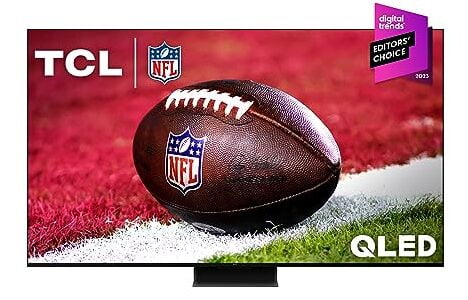
True Score
84847Experts
90478Customers
Absolutely Fresh
 SAVE $50$999.99$949.99
SAVE $50$999.99$949.99Snapshot
Reasons to Buy
- Outstanding picture quality
- Spectacular brightness and contrast ratio
- Rapid response time
- Super low input lag
Reasons to Avoid
- Disappointing viewing angles
Specifications
Max Resolution 3840 x 2160 (4k) 
Backlight Type Full-Array Refresh Rate 120 Hz 
Depth 11.7″ Display Type QLED HDMI Inputs (Total) 2 
HDMI Type HDMI 2.1 HDR Format Dolby Vision, HDR10, HDR10+, HLG 
Height 34.1″ High Dynamic Range (HDR) Yes 
Number of Audio Channels 3 
Panel Type LED Screen size 65″, 75″, 85″, 98″ 
Smart Platform Google TV 
Speaker Output 40 Watts 
Sync Technology AMD FreeSync Premium Pro 
VRR Yes 
Voice Assistant Google Assistant 
Weight 54.7 lbs 
Width 56.9″ 
Works With Amazon Alexa, Apple HomeKit, Google Assistant All Specs
Test Results
SDR Brightness (nits) 2,076 HDR Brightness (nits) 2,005 Color Gamut % (DCI P3 xy) 94.59 Response Time (ms) 8.9 Contrast Ratio (x:1) 114,057 EOTF (600 nit delta) 0.037 Color Gamut % (DCI P3 uv) 97.31 Color Gamut % (Rec 2020 xy) 75.81 Color Gamut % (Rec 2020 uv) 80.57 Color Gamut % (sRGB) 0 Color Gamut % (Rec 709) 0 Color Gamut % (BT.2020) 0 Color Gamut % (Adobe RGB) 0 Color Gamut % (BT.709) 0 Input Lag (ms) 14.3 Color Washout (Degrees) 24 Color Shift (Degrees) 31 Brightness Loss (Degrees) 32 Reflections (%) 1.8 Low-Freq Extension (Hz) 89.8 Freq Response StdDev @ 70db 4.74 Freq Response StdDev @ 80db 4.67 Weighted Total Harmonic Distortion @80db 0.128 Intermodulation Distortion @80db 8.67 EOTF (1000 nit delta) 0.0238 EOTF (4000 nit delta) 0.0271 All Tests
All Retailers
- $949.99$1,000Save $50
Availability
In StockFree Shipping
No - $998.00$1,136Save $138
Availability
In StockFree Shipping
Yes - $1,299.00
Availability
In StockFree Shipping
Yes
Our Verdict
If you’re looking for a way to get outdoor-capable performance in a high-value and low-cost package, the TCL QM8/QM850G QLED offers up enough brightness to defeat direct sunlight. Plus, the money you save can be put towards an outdoor enclosure. This savings is particularly attractive if you compare it to Samsung’s The Terrace, given you’ll be saving thousands of dollars compared to buying the purpose built model instead.
With a best-in-class SDR brightness of 2076 nits and a HDR brightness of 2005 nits, the QM8 is unmatched in its ability to counter direct sunlight, ensuring that images remain vivid and ultra clear, regardless of how strong the sun is shining that day. Coupled with a 94.59% DCI P3 color gamut and a 1.8% reflection rate, the TCL QM8/QM850G excels in displaying vivid colors and reducing glare, which is vital for maintaining image quality in bright outdoor settings.
Viewing angles are where the QM8 struggles. With the narrowest viewing angles of any TV on our list, at 24 degrees, the TV demands you sit basically square with it to avoid having the colors begin to wash out. This makes the TV less than ideal for parties or big sports events where plenty of people will be crowding around the set. This is a bit of a shame, because with a response time of 8.9 ms, the QM8 is good for sports, with a snappy response that keeps images free of blur. The input lag of 14.3 ms is less impressive, and puts the TV at the back of the pack for delay, making it more ideal for you if you’re into casual gaming.
Value is what the TCL QM8/QM850G brings to the table. With high brightness, strong color accuracy, and unbeatable cost-effectiveness, the TV is a fantastic way to get outdoor performance and still have enough left over to pick up an enclosure to keep your purchase safe. Whether you’re watching sports, playing casual games, or enjoying movies, the QM8 can handle anything you throw at it without getting lost in the light of the great outdoors.

Our Approach to Testing the Best Outdoor TVs
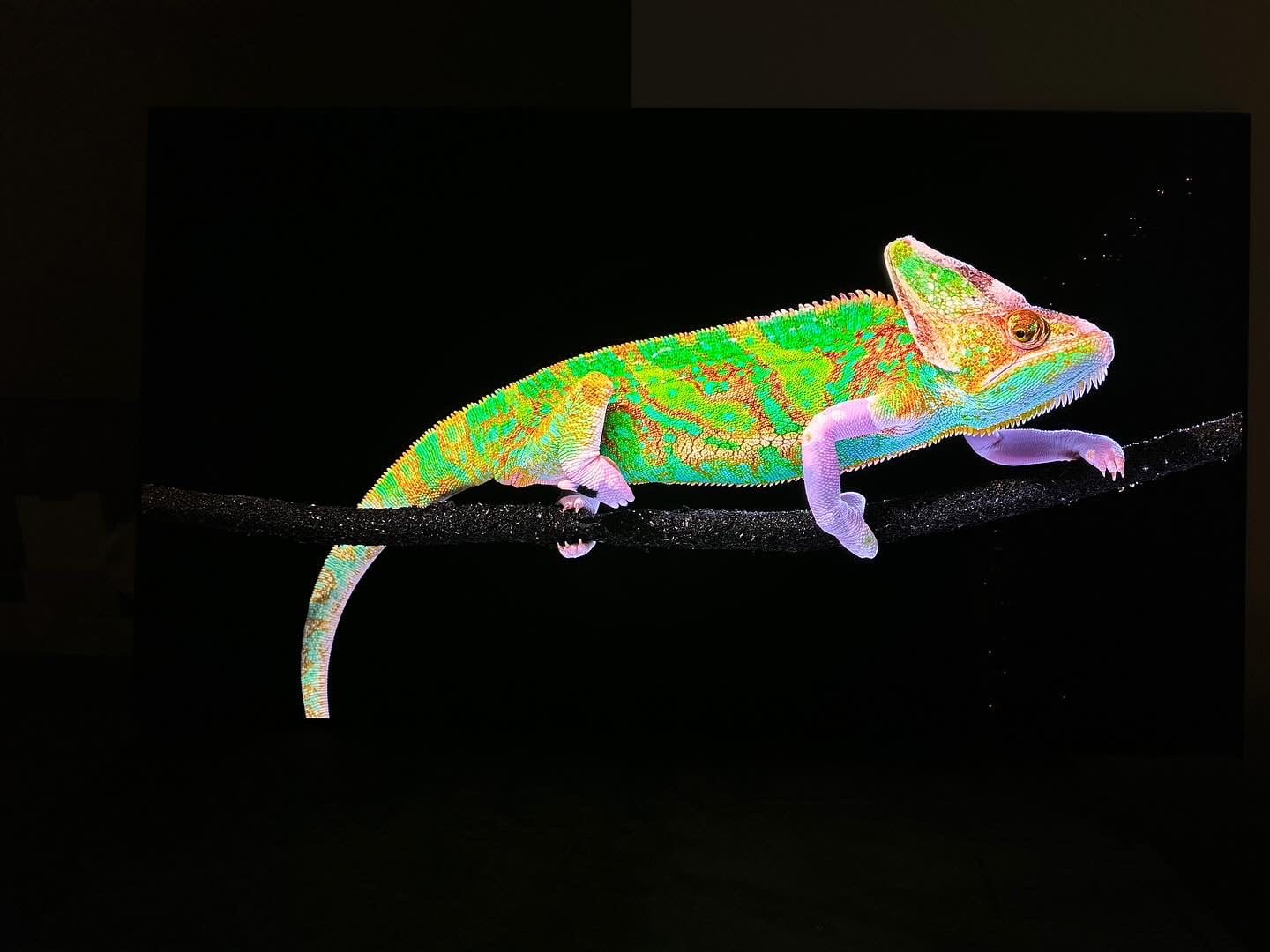
Evan Shepard/Gadget Review
When it comes to selecting the best outdoor TVs, our focus lies in collecting comprehensive test data that ensures resilience against outdoor elements and exceptional picture quality under challenging conditions. We prioritize features like high brightness levels and durability to combat direct sunlight, temperature fluctuations, and humidity. Our guide offers a shortcut to choosing an outdoor TV that seamlessly brings entertainment outdoors without compromise.
We gather data so you don’t have to. Our team averages testing results to accurately represent each product’s capabilities. Then, we filter and sort our buying guides to ensure products meet your needs, like those for an outdoor TV with LED panel technology. This guarantees you’re buying the correct product.
You may notice some of our graphs contain “Source: RTings”. This is to indicate that the data we’re showing off in a graph has come from a single source – because it’s the only source that actually tested the criteria and had data for it! Normally, our data is an average out of all of the various publications that test and provide data to give you a good idea of how a product is going to perform on average.
Which Criteria Matters for Testing Best Outdoor TVs?
By focusing on these criteria (3 required, 3 nice to have), anyone can quickly and easily compare these TVs and how they’ll perform. This helps you make an informed decision and purchase a TV that will fit into your space.
| CRITERIA | RANGE | REQUIRED | DEFINITION |
|---|---|---|---|
| SDR Brightness | 600+ nits | Yes | Assess the luminance of your display when operating in Standard Dynamic Range (SDR) mode. |
| HDR Brightness | 1100+ nits | Yes | Determine the luminance of your display in High Dynamic Range (HDR) mode. |
| Reflections | <= 3% | Yes | The amount of light reflected off the screen (less is better). |
| Color Gamut (DCI P3 xy) | >= 97% | No (nice to have) | Evaluate the extent to which a TV can reproduce a specified spectrum of colors. |
| EOTF | 0.06 | No (nice to have) | Standard that governs how a display interprets and renders brightness and color. |
| Contrast Ratio | >= 10,000 | No (nice to have) | The ratio between the brightest white and darkest black that the screen can display. |
Our Trusted Data Sources
(Publication category Score is 80%+)
We looked at 210+ TV reviewers and while 24 are trustworthy (60%+ Trust Rating), we only use data from the testers that are “very trusted” which means a Trust Rating above 70%. The three we have listed below are our most trusted for TVs, along with our own in-house TV expert.
- Evan Shepard – Gadget Review
- Matthew Lopes – RTings, MuckRack
- Will Greenwald – PCMag, MuckRack, Twitter
- David Katzmaier – CNET, MuckRack, Twitter
Interested in a comprehensive analysis of our data sources? We’ve got you covered. Below, you’ll find a detailed list of every TV review website we’ve identified, organized by their respective Trust Ratings from highest to lowest. But we didn’t stop there. We’ve meticulously reviewed each publication and verified the data by checking whether the authors have bio links to MuckRack or LinkedIn. We’re committed to not only checking the facts but ensuring their veracity.
Best Outdoor TVs Test Data & Results
1. SDR & HDR Brightness TV Test Results
In well-lit rooms, the brightness level of your Outdoor TV, quantified in nits, is key to a great viewing experience. A TV that doesn’t meet the brightness requirement will struggle against natural and artificial light, resulting in a dim, lackluster image. Essentially, nits measure how well your TV can stand up to light interference, with higher values ensuring a sharper, more vivid display.
For standard viewing on the best Outdoor TV, you should look for at least 600 nits to strike the right balance between clarity and color quality in standard dynamic range (SDR) content. For high dynamic range (HDR) content, which offers richer colors and greater contrast, a minimum of 1100 nits is ideal to truly appreciate the enhanced visuals. These brightness levels are recommended to ensure your TV performs well in bright settings, allowing you to enjoy your shows and movies without any loss in detail or quality. Aim for these minimums: SDR Brightness >= 600 nits; HDR Brightness >= 1100 nits for the optimal experience.
Discover the top Outdoor TVs, ranked from brightest to least, all exceeding our brightness criteria.
Brightness
SDR: 600+ nits
HDR: 1100+ nits
Acceptable range of performance
Definition: Maximum brightness in a specified pattern size window. Most commonly measured in a 10% or 100% white window.
Units of Measurement: nits (alternatively cd/m²)
Tools to Measure: TV, luminance meter
Why It’s Important:
Brightness helps counter ambient light so that details and colors don’t wash out and get lost.
SDR Brightness (in nits, higher is better)
HDR Brightness (in nits, higher is better)
2. Reflections TV Test Results
Reflections
<= 3%
Acceptable range of performance
Definition: How much light the TV screen reflects when subjected to light.
Units of Measurement: Percent of light reflected (%)
Tools to Measure: Spectrometer, Sampling Sphere
Why It’s Important:
Reflections can be distracting and distort the image.
Reflections handling on TVs is critical for sports fans, ensuring that glare from lights or windows doesn’t wash out the action. It’s about how well a TV can minimize the impact of ambient light on its screen, preserving the quality of the image during bright day games or well-lit room conditions.
Technically, this involves the TV’s screen surface and coatings designed to reduce the reflection of external light sources without affecting picture brightness and contrast. The effectiveness of reflections handling is often measured in percentage; the lower the percentage, the better the TV is at minimizing reflections.
Ideally, a TV reflects no more than 3% of light. TVs that boast advanced anti-reflective properties, such as matte screens, help to improve this capability.
Reflections (as a %; lower is better)
3. Color Gamut (DCI P3 xy) TV Test Results
Color Gamut
>= 97%
Acceptable range of performance
Definition: The TV’s capability to display a spectrum of colors.
Units of Measurement: % (color space coverage in percent)
Tools to Measure: Colorimeter
Why It’s Important:
Inaccurate colors compromise the authenticity of the content.
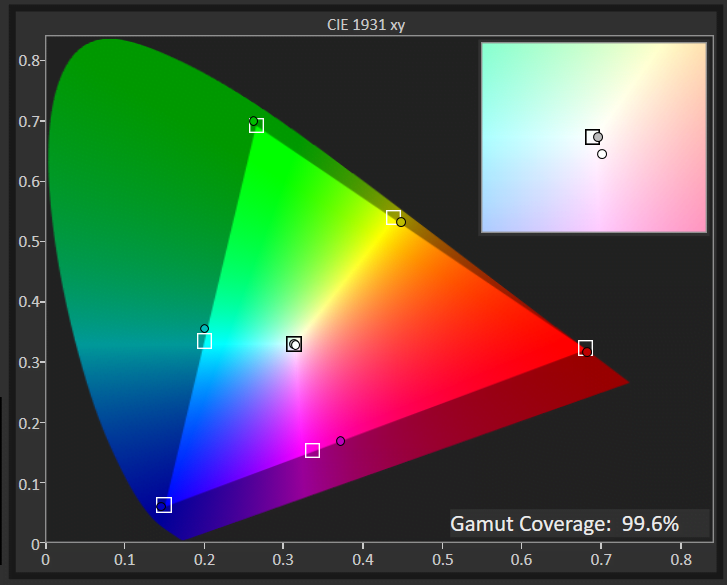
Color gamut defines the range of colors an Outdoor TV can reproduce, directly affecting how vibrant and true-to-life the images look. A wide color gamut in a compact TV brings out richer, more vivid colors – from the lush greens of a garden to the bright colors of animated characters, enhancing your viewing experience to closely mimic real life.
This concept is technically measured against standards like the DCI P3 xy, a benchmark for high-quality visuals. A outdoor TV covering a higher percentage of this color space can display colors more accurately and vividly.
For those who prioritize vibrant and immersive visuals in a smaller package, aiming for a outdoor TV with a color gamut of 90% or higher on the DCI P3 xy scale is ideal. This ensures that the content you watch is as vibrant and lifelike as possible. Below is all the TVs on this guide sorted by best to least in Color Gamut.
Below are the top outdoor TVs, ordered by color gamut.
DCI P3 XY Color Gamut (as a %; high is better)
4. EOTF Test Results
The Electro-Optical Transfer Function (EOTF) plays a critical role in ensuring the content on your TV looks exactly as the creator intended. This technical feature adjusts your screen’s brightness levels, ensuring every scene, from the darkest shadows to the brightest highlights, is displayed with true-to-life accuracy.
In rooms flooded with light, a TV that nails EOTF calibration shines by preserving the intended contrast and detail in the picture despite the challenging conditions. It balances the brightness so that images remain vibrant and full of detail, unaffected by the glare of ambient light.
A TV that excels in managing EOTF offers an immersive and authentic viewing experience. It brings creators’ visions to life, accurately rendering every scene with the proper light and dark levels, no matter the lighting in your room. This means you get a consistent, realistic picture that captures the full spectrum of colors and contrasts, from the subtlest hues to the most intense explosions. Below is all the TVs on this guide sorted from best to worst in EOTF.
Below are all the outdoor TVs on our list, ordered by EOTF, all exceeding our minimum requirement.
EOTF
< 0.06 (600 nit Δ)
Acceptable range of performance
Definition: How your TV interprets and renders the luminance data from content and translates it to be represented on screen. If EOTF/Gamma tracking is too low or too high, it will result in an over-brightened or over-darkened image from reference.
Units of Measurement: this test measures for the delta from the standard
Tools to Measure: Luminance colorimeter
Why It’s Important:
EOTF ensures that the game is displayed (color and HDR brightness) as the creator intended it
EOTF (source: rtings.com – 0 = no data exists; lower is better)
5. Contrast Ratio Test Results
For outdoor TV enthusiasts, a solid contrast ratio is crucial for enjoying your favorite TV shows or movies, especially in darker settings. This feature directly impacts how lifelike and dynamic the picture appears on your screen, ensuring that dark scenes are displayed with clear, crisp blacks instead of murky grays and bright scenes retain their detail without appearing washed out.
Put simply, the contrast ratio is all about the range of luminance a TV can produce, from the deepest blacks to the brightest whites. It’s what brings depth to the image, enhancing the realism of every scene. Watching a movie in the dark, for example, the difference between a TV with a poor contrast ratio and one with a high ratio is stark: the former struggles, blending shadows into a flat gray, while the latter delivers true black, making night scenes more immersive and detailed.
Ideally, a contrast ratio of 10,000:1 is what you should aim for in an outdoor TV. This level of luminance variance ensures that you’re getting a picture quality that can handle the nuances of lighting in any scene, providing a viewing experience that’s both rich and engaging. Note: OLED TVs have infinite contrast ratio, indicated by “0.” For more info on how TV display technologies differ from each other along with resolutions, give our comprehensive TV buying guide a read.
Below are the top outdoor TVs, ordered by contrast ratio, all exceeding our testing criteria.
Contrast Ratio
>=10,000:1
Acceptable range of performance
Definition: Difference between the darkest black and the brightest white a screen can display.
Units of Measurement: cd/m2
Tools to Measure: Luminance meter
Why It’s Important:
A higher contrast ratio delivers deeper blacks, enhancing content definition, especially in darker rooms.
Contrast Ratio (higher is better)
Best Outdoor TVs: Mistakes To Avoid
- Ignoring Weatherproof Ratings: Overlooking weatherproof ratings can lead to purchasing a TV ill-equipped to withstand outdoor conditions, resulting in premature damage.
- Underestimating Brightness Levels: Failing to consider high brightness levels can result in poor visibility under direct sunlight, diminishing the viewing experience.
- Neglecting Connectivity: Overlooking connectivity options may limit the ability to stream content seamlessly outdoors, hindering entertainment options. Consider opting for a smart TV, and if you’re unfamiliar with what a smart TV is, it’s a TV that features Wi-Fi and possibly Ethernet connectivity to access streaming services and online content directly. That type of connectivity can significantly improve your outdoor entertainment experience by ensuring a wide range of viewing options without the need for external devices.
- Disregarding Installation Considerations: Not accounting for installation factors like mounting options and outdoor placement can lead to inconvenient setups or suboptimal viewing angles. If you’re considering mounting a larger outdoor model such as a top 55-inch TV or bigger, properly mount it on a reasonably-sized wall and use a weather-resistant and sturdy support.
The Best Outdoor TVs Tests Compared
Product |
True Score
|
SDR Brightness
|
HDR Brightness
|
Reflections
|
Color Gamut
|
EOTF
|
Contrast Ratio
| |
|---|---|---|---|---|---|---|---|---|
| 90 |
|
|
|
|
|
| $1,399.00 |
| 89 |
|
|
|
|
|
| $1,797.95 $1,898 $100 |
Samsung The Terrace Full Sun Outdoor TV
| 84 |
|
|
|
|
|
| $3,299.00 $5,000 $1,701 |
| 84 |
|
|
|
|
|
| $949.99 $1,000 $50 |

